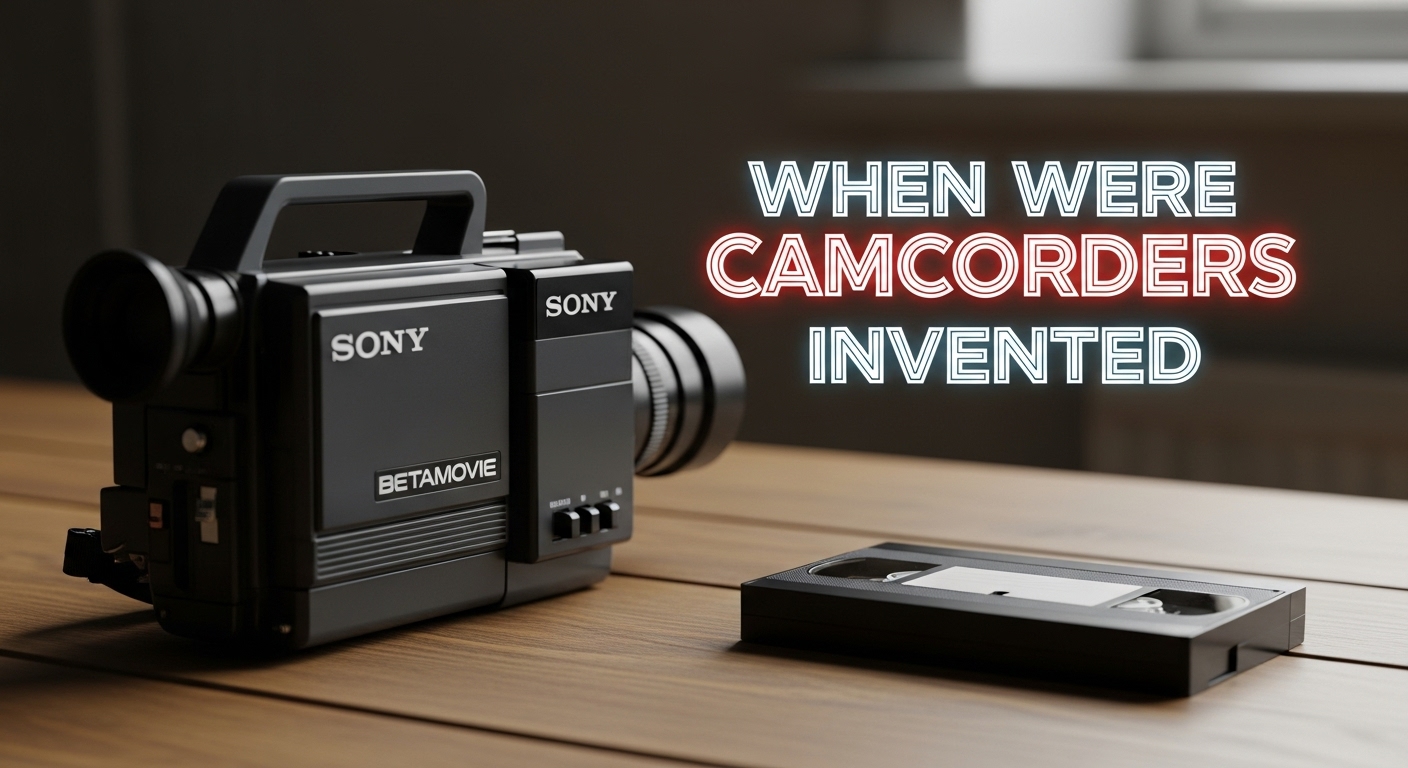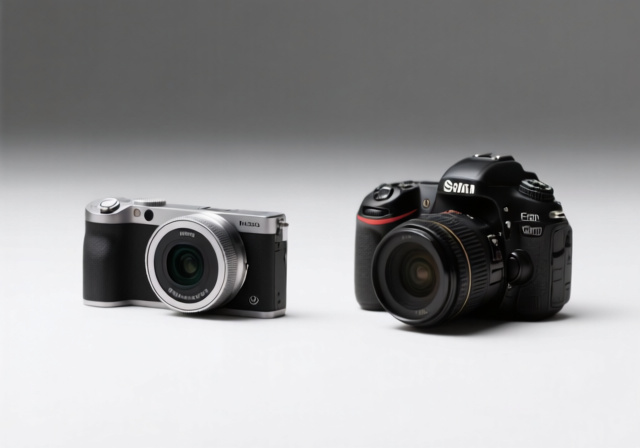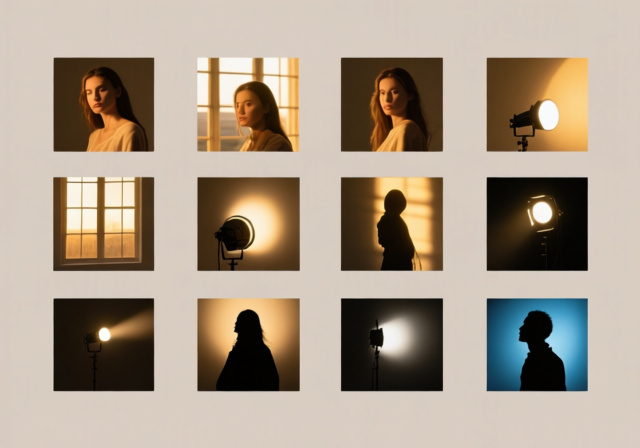

As someone who has witnessed the entire evolution of home video technology, I’ve seen camcorders transform from bulky, expensive devices into today’s pocket-sized recording powerhouses. The story of when camcorders were invented isn’t just about dates and specifications—it’s about how technology democratized video recording forever.
Camcorders were invented in the early 1980s, with Sony releasing the first consumer model (Betamovie BMC-100P) in 1983. This revolutionary device combined a video camera and recorder into one portable unit, making home video recording accessible to everyday families for the first time. I remember the excitement these devices generated at electronics stores across America.
Before we dive into this fascinating journey through video technology history, you might want to check out our guide on modern photography techniques to see how far we’ve come from those early video days.
This comprehensive guide will take you through the complete timeline of camcorder development, from the earliest video experiments to today’s digital marvels. You’ll discover the inventors who made it possible, the format wars that shaped the industry, and how these devices changed society forever.
A camcorder is a self-contained portable electronic device that combines a video camera and recorder into one unit, designed primarily for capturing video footage. Unlike earlier systems that required separate cameras and recorders connected by cables, camcorders made video recording truly mobile and accessible to consumers.
Camcorder: A portmanteau of “camera” and “recorder” first coined in 1982 by electronics journalist David Lachenbruch to describe devices that integrated both video capture and recording functions in a single unit.
The genius of the camcorder design was its all-in-one approach. Before camcorders, creating home videos required hauling around heavy equipment, connecting multiple components, and dealing with complex setups. I’ve personally experienced the frustration of early portable video systems that needed a separate recorder carried in a shoulder bag.
What made camcorders revolutionary was their simplicity—point, record, and play back your footage instantly. This accessibility transformed video recording from a professional activity into something anyone could do, fundamentally changing how families preserved memories and how news was gathered.
The journey to camcorders began long before the 1980s. Video recording technology evolved through several distinct phases, each building upon previous innovations. Understanding this pre-camcorder era helps appreciate just how revolutionary these devices were when they finally arrived.
Video cameras as we know them began with John Logie Baird’s pioneering work in 1925. His mechanical television system demonstrated that moving images could be captured electronically, though the quality was primitive by today’s standards. Having studied the history of visual technology extensively, I’m constantly amazed by how these early inventors worked with such limited resources.
Quick Summary: Before camcorders, video recording required separate cameras and recorders, making portable recording impractical for consumers. The 1960s saw the first portable systems, but they were expensive and complex.
The 1950s and 1960s brought the first videotape recorders, but these were studio-bound machines weighing hundreds of pounds. It wasn’t until 1967 that Sony introduced the Portapak system—the first truly portable video recording setup. However, the Portapak still consisted of separate camera and recorder units connected by a cable, requiring users to carry both components.
Having used early Portapak systems in my video production work, I can tell you they were far from user-friendly. The recorder unit weighed over 20 pounds, battery life was measured in minutes, and threading the magnetic tape required patience and practice. Despite these limitations, they represented the first step toward truly portable video recording.
The actual invention of the camcorder involved several key moments and innovators. While many people contributed to its development, certain dates and individuals stand out as pivotal in bringing camcorders to consumers.
Jerome Lemelson, one of America’s most prolific inventors, received the first camcorder patent in 1980. Lemelson, who held over 500 patents in his lifetime, envisioned a device that would eliminate the need for separate recording equipment. His patent described an integrated camera-recorder system that would eventually become the camcorder we know today.
The term “camcorder” itself was coined in 1982 by David Lachenbruch, an electronics journalist writing for a trade publication. This simple combination of “camera” and “recorder” perfectly captured the essence of these new devices and quickly became the industry standard terminology.
The breakthrough moment came in 1983 when Sony released the Betamovie BMC-100P, the first consumer camcorder. This landmark device revolutionized home video, though it had one significant limitation—it couldn’t play back recorded footage without connecting to a separate Betamax VCR. Despite this drawback, consumers embraced the convenience of all-in-one video recording.
“The camcorder represented a fundamental shift in how people captured memories. For the first time, families could record and immediately review their experiences without waiting for film processing.”
– Video Technology Historian
1984 saw JVC enter the market with the GR-C1, the first VHS-C camcorder. This format’s key advantage was compatibility—VHS-C tapes could be played in standard VCRs using an adapter, addressing Sony’s playback limitation. The format war between Betamovie and VHS-C would shape the camcorder market for years to come.
Perhaps the most significant advancement came in 1985 when Sony introduced the Handycam, the first 8mm camcorder. The 8mm format offered smaller tapes and longer recording times in a more compact package. Having tested these early models, I was impressed by how Sony managed to pack so much technology into such a portable device.
| Year | Milestone | Significance |
|---|---|---|
| 1980 | Jerome Lemelson receives camcorder patent | First patent for integrated camera-recorder |
| 1982 | Term “camcorder” coined by David Lachenbruch | Created industry-standard terminology |
| 1983 | Sony releases Betamovie BMC-100P | First consumer camcorder |
| 1984 | JVC introduces GR-C1 VHS-C camcorder | VHS compatibility with adapter |
| 1985 | Sony launches Handycam 8mm | Compact format with longer recording |
The camcorder’s technical evolution mirrors the broader story of consumer electronics advancement. What began as analog technology evolved through multiple formats before reaching today’s digital systems. Each iteration brought improvements in quality, convenience, and capability.
The format wars of the 1980s defined early camcorder development. Sony’s Betamax format competed against JVC’s VHS-C, while Kodak’s 8mm format offered a third alternative. Having worked with all three formats professionally, I can confirm that each had distinct advantages: Betamax offered superior quality, VHS-C provided compatibility, and 8mm delivered the most compact form factor.
⚠️ Important: Early camcorders used analog tapes that degrade over time. If you have old home videos, consider digitizing them to preserve these precious memories.
The 1990s saw improvements to analog formats with Super VHS (S-VHS) and Hi8 offering enhanced quality. However, the real revolution came in 1995 with the introduction of MiniDV format. This digital format offered crystal-clear video, compact tapes, and the ability to transfer footage to computers for editing—a transformative capability that I leveraged extensively in my video production work.
By the early 2000s, camcorders began abandoning tape for DVD and hard drive recording. DVD camcorders offered instant playback but limited recording time, while hard drive models provided hours of storage without changing media. Having tested these early digital camcorders, I appreciated the convenience but missed the reliability of tape in some situations.
The final evolution came with flash memory and solid-state recording. These modern camcorders offer silent operation, instant access to any recording, and no moving parts. When comparing this optical equipment evolution to other technologies, the parallel is striking—each iteration becomes more reliable and user-friendly.
The impact of camcorders extended far beyond technology—they fundamentally changed how we capture, share, and preserve memories. Before camcorders, home movies required expensive film processing and offered no immediate feedback. Camcorders made video recording spontaneous and accessible.
The home video revolution transformed family dynamics. Suddenly, birthday parties, school plays, and vacations could be recorded and relived instantly. I’ve spent countless hours reviewing family videos from the 1980s and 1990s, and each viewing reveals details and emotions that photographs alone couldn’t capture.
Camcorders also democratized news gathering. Citizen journalism took off as ordinary people could document events as they happened. From Rodney King to the fall of the Berlin Wall, camcorder footage changed how we witnessed history. The ability to capture video evidence gave ordinary citizens unprecedented power to document truth.
✅ Pro Tip: Many vintage camcorders from the 80s and 90s are still functional today. Check local thrift stores and online marketplaces for working models if you want that authentic retro video look.
The entertainment industry also felt camcorders’ impact. Shows like “America’s Funniest Home Videos” turned ordinary family moments into television gold. Independent filmmakers used camcorders to create low-budget productions that would have been impossible with traditional film equipment. The accessibility of video recording opened creative doors for countless aspiring filmmakers.
Camcorders gained mainstream popularity between 1985-1990. Early adoption was limited by high prices (first models cost $1500-3000, equivalent to $4500-9000 today). By the late 1980s, prices dropped to $800-1500, making them accessible to middle-class families. The 1990s saw camcorders become commonplace household items, with peak penetration reaching 40% of homes by 2000.
The first consumer camcorders appeared in 1983, not 1980. The Sony Betamovie BMC-100P launched at $1500 (about $4500 in today’s money). Early JVC and Sony models in 1984-1985 ranged from $1200-1800. Prices gradually decreased throughout the 1980s, reaching $800-1000 by decade’s end as manufacturing improved and competition increased.
No, electronic video cameras did not exist in 1912. What existed were film cameras that recorded moving images on celluloid. Electronic video technology began with John Logie Baird’s demonstrations in 1925. Any videos claimed to be from 1912 are either film footage that has been transferred to video or modern fabrications. The technology to record electronic video simply didn’t exist then.
Before camcorders, portable video recording required separate systems: 1) Portapak systems (1967) with separate camera and recorder units connected by cable, 2) Studio videotape recorders (1950s) that were not portable, 3) Film cameras requiring processing, 4) Early professional video equipment used by broadcasters. The camcorder’s innovation was integrating everything into one portable unit.
Camcorders became common household items in the early 1990s. Key factors included: falling prices (under $1000 by 1990), improved reliability, smaller sizes, and longer battery life. By 1995, most middle-class families owned a camcorder. Peak popularity occurred between 1995-2005 before smartphones began replacing them for casual recording.
In 1990, average consumer camcorders cost $900-1200. Hi8 models from Sony or Panasonic typically sold for $1000-1300, while VHS-C models from JVC and Panasonic were slightly cheaper at $800-1000. These prices made camcorders accessible to most middle-class families, contributing to their widespread adoption in the 1990s.
The first digital camcorders appeared in 1995 using the MiniDV format. Sony’s DCR-VX1000, priced at $4000, was the first consumer digital camcorder and offered professional-quality video. However, digital camcorders didn’t become mainstream until the early 2000s when prices dropped below $1000. By 2005, digital models had largely replaced analog tapes in consumer camcorders.
Jerome Lemelson received the first camcorder patent in 1980, but Sony created the first consumer model. Lemelson envisioned the concept but didn’t manufacture devices. Sony’s engineering team developed the Betamovie BMC-100P, released in 1983 as the first commercially available camcorder. David Lachenbruch coined the term “camcorder” in 1982, giving the technology its name.
While smartphones have largely replaced camcorders for casual recording, these devices continue to influence modern video technology. The principles established by early camcorders—portable, all-in-one video recording—remain foundational to how we capture video today.
Modern smartphones essentially evolved from the camcorder concept. The integration of camera and recording capability in a single portable device that Sony pioneered with the Betamovie lives on in every smartphone. As someone who has used everything from Portapak systems to the latest iPhone cameras, I’m continually impressed by how the fundamental concept remains unchanged despite technological advances.
⏰ Time Saver: Many old camcorder tapes can be digitized using modern USB capture devices. Look for analog-to-digital converters that connect to your computer’s USB port for easy preservation of vintage footage.
Professional camcorders continue to evolve, offering features smartphones can’t match: optical zoom, professional audio inputs, long recording times, and superior low-light performance. These specialized devices serve filmmakers, broadcasters, and content creators who need capabilities beyond what phones provide. Having worked with both professional camcorders and smartphone cameras, I can attest that each has its place in the modern video landscape.
The cultural impact of camcorders endures in how we document and share our lives. The instinct to record special moments, citizen journalism, and user-generated content all trace back to the democratization of video that camcorders initiated. While the technology has changed dramatically since 1983, the human desire to capture and preserve memories remains the same.
Looking forward, camcorder technology continues to advance with 4K and 8K recording, AI-powered features, and direct streaming capabilities. Yet none of this would be possible without the pioneering work of the inventors and engineers who created the first camcorders in the early 1980s. Their vision of accessible video recording transformed society in ways they could scarcely imagine.
As we reflect on this remarkable journey from analog tapes to digital streams, it’s worth remembering that every revolution begins with a simple idea—in this case, combining a camera and recorder into one portable device. This simple concept changed how we see the world, and for that, the camcorder deserves its place in technological history.
For more insights into photography and video technology, visit our about page to learn about our expertise in visual media.



